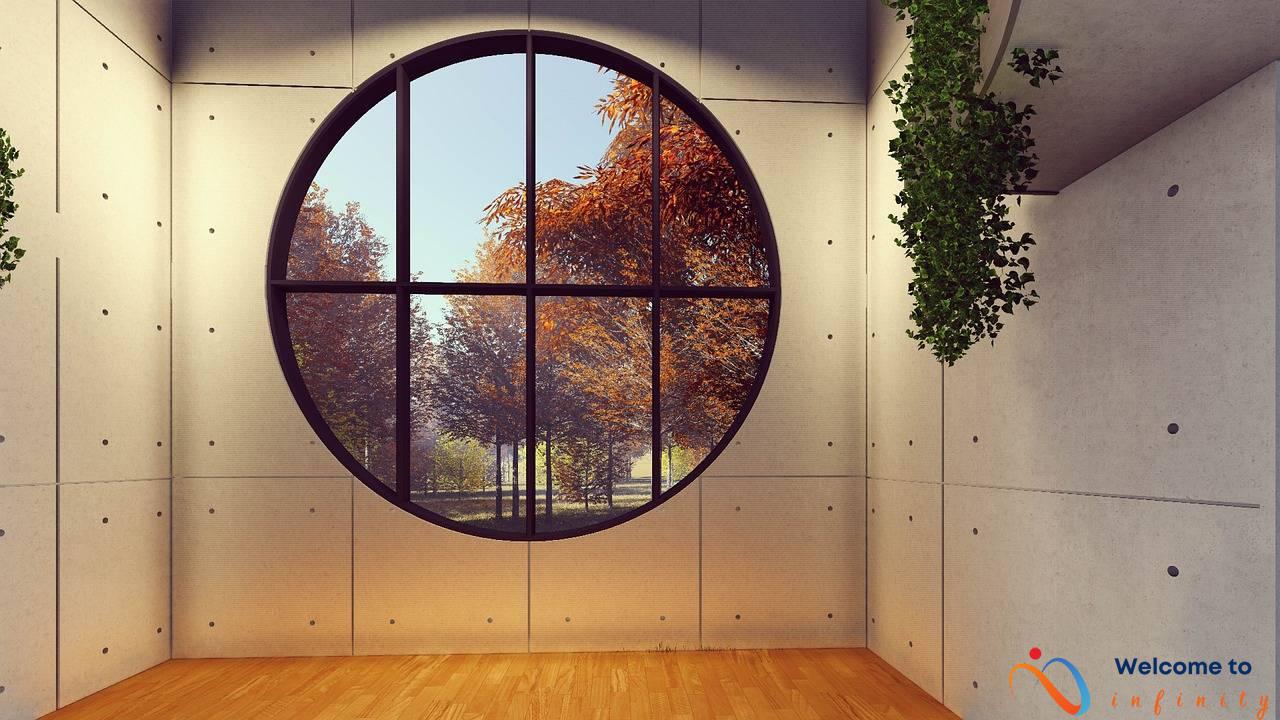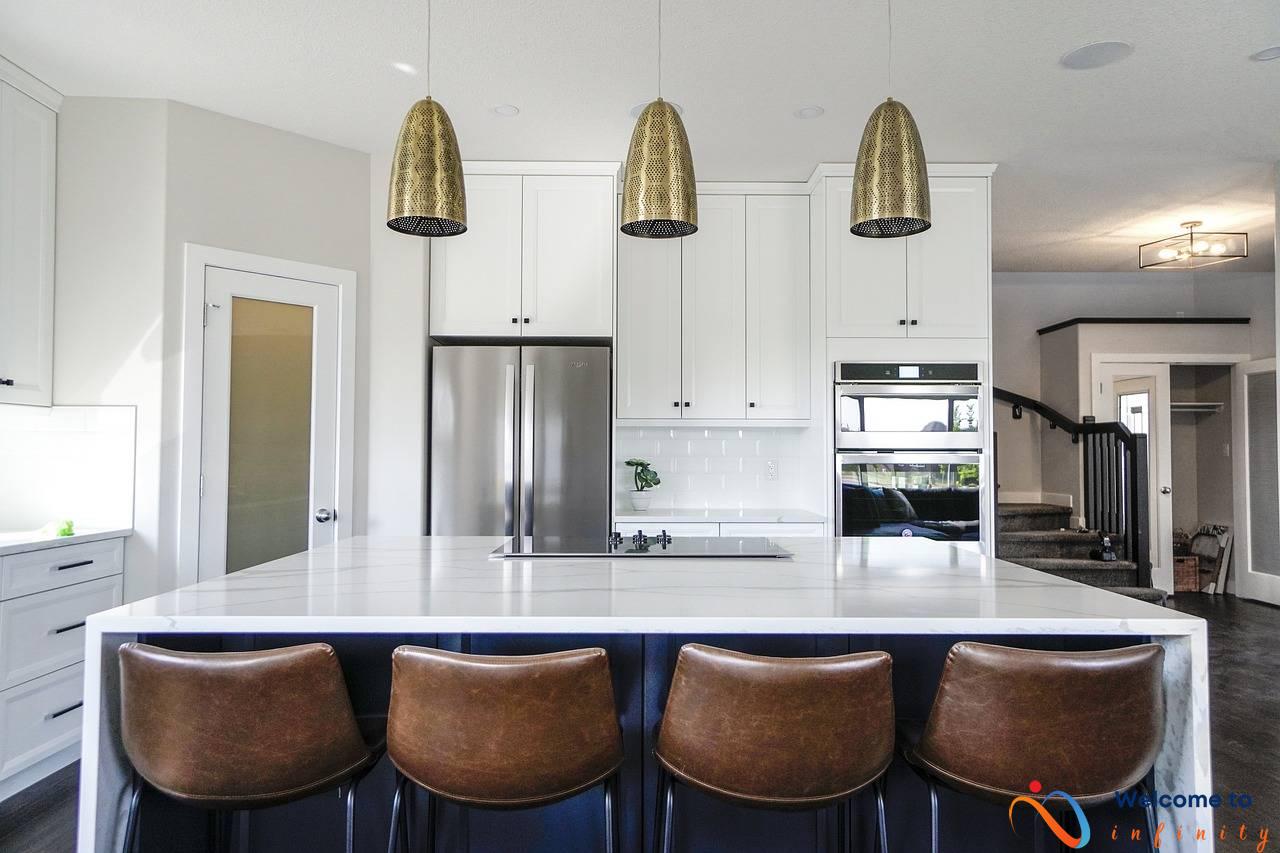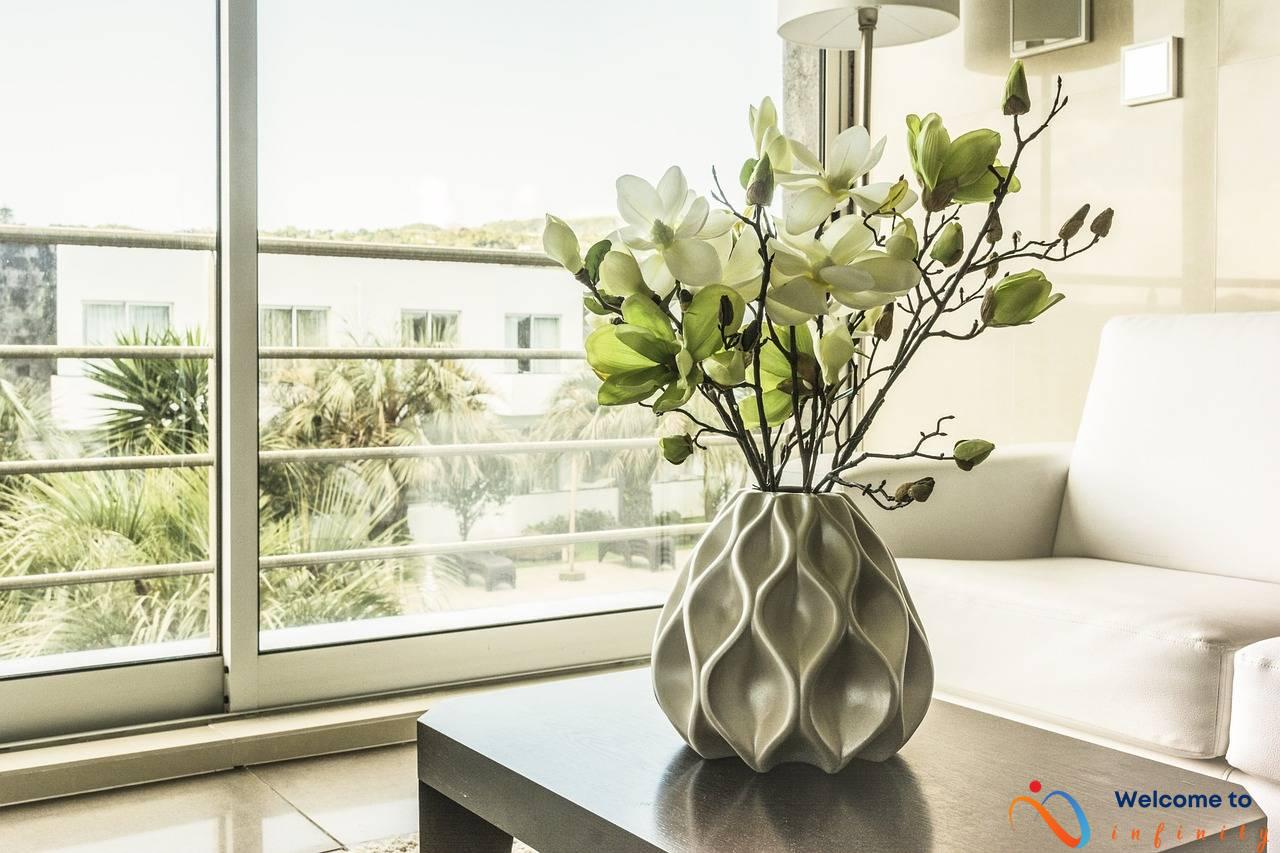Creating a beautifully decorated home that emanates luxury and sophistication is possible with the art of layering. The process involves combining different elements such as color, texture, and pattern to create a cohesive and harmonious look across your space. Let's delve into some effective layering techniques that can transform the look and feel of your home.
One of the fundamental aspects of layering is combining different colors while keeping an overall cohesive color scheme. Neutral tones such as beige and white paired with accent colors like navy blue and burgundy can create a visually appealing and balanced look. Texture and pattern also play a significant role in layering. These elements add depth and interest to your space. Mix and match textures like velvet, satin, and linen and incorporate patterns like stripes, checks, and florals to create visual diversity.
Furniture placement is also essential in layering decor. Pieces of furniture can serve multiple purposes, such as storage or display, in addition to their main function. Using a coffee table as an accent piece with books or decorative accents on top can add visual interest and a touch of personality to your space. Choosing accent chairs with unique patterns can also enhance the design of your room.
Accessorizing can make a significant impact on your space. Decorative accents like throw pillows, vases, and sculptures can add depth and dimension to your home decor. Use different textures and materials when accessorizing to avoid a cluttered look. Wall art, rugs, curtains, and lighting fixtures are other essential elements of layering. Incorporating these elements into your decor plan can transform a dull, lifeless space into a lively and luxurious sanctuary.
In conclusion, the art of layering decor takes patience and attention to detail, but the results are worth the effort. By incorporating color, texture, and pattern into your space and accessorizing with thoughtful pieces, you can create a luxurious and cohesive look that expresses your personal style while being both comfortable and functional.
Understanding Layering
Layering is an art that involves the skillful arrangement of different elements to create a unified and cohesive look. Understanding the basics of layering is crucial to achieving a luxurious and sophisticated space that reflects your personal style.
When it comes to layering, color schemes play a crucial role. Select colors that complement each other and create an appealing contrast. You can use a color wheel to help you choose the right colors for your space. Additionally, textures create interest and depth in your space; mixing textures such as fur, velvet, and woven fabrics can add depth to your decor.
Patterns are another fundamental aspect of layering, and they help create a theme in your space. To get the desired pattern mix, pair geometric patterns with more organic patterns. Alternatively, you can use similar patterns in varying sizes and colors for a harmonious look.
When it comes to layering, it's important to keep balance in mind at all times. Arrange objects with varying heights, but ensure that there is an overall sense of symmetry. A table or a shelf can be divided into thirds to create visual harmony. Don't forget, layering is all about creating depth but not chaos.
Layering can be applied to surfaces (like a table or bookshelf), walls, and even the floor. A well-arranged rug can bring together a room, while decorative throw pillows and blankets can create a homely ambiance. The key is to use the right combinations and find the right rhythm.
In summary, creating a luxurious and sophisticated home through effective layering techniques is possible for everyone. Ensure you choose the right color schemes, textures, and patterns to bring depth and balance to your home. By using these basic layering principles, you can create a space that is both functional and stylish.
Furniture Placement
If you want to create a luxurious and cohesive look in your home, furniture placement is crucial. It not only affects the overall aesthetic of your space but also contributes significantly to the functionality of your interior. Here are some tips on how to master the art of furniture placement:
- Start by assessing the size of your room and the scale of your furniture. It's essential to choose pieces that are proportional to the space you have.
- Consider the traffic flow in your room, and make sure there is enough space to move around comfortably. You don't want your furniture to obstruct the natural flow of movement.
- Create a focal point in the room, such as a fireplace or a large window, and arrange your furniture around it. This will help to anchor the space and draw the eye towards the center.
- If you have a small room, try to avoid placing all your furniture against the walls. Instead, experiment with different arrangements, such as creating a cozy conversation area or dividing the room into zones.
Choosing the right pieces for your home is also crucial in achieving a cohesive look. When selecting furniture, think about the style, color, and texture of each piece. It's essential to choose items that complement each other and blend with the overall aesthetic of your home.
With these simple tips, you can master the art of furniture placement and transform your space into a luxurious and inviting oasis.
Accessorizing
When it comes to decorating your space, accessories are a key player in creating a cohesive and beautiful look. Decorative accents such as vases, candles, and sculptures can add a touch of personality and style to any room. They are also great for tying together a color scheme and adding texture.
One of the most important aspects of accessorizing is choosing the right pieces to complement your furniture and overall design aesthetic. When selecting accessories, consider the materials they are made of and how they will coordinate with your existing decor. For example, if you have a lot of wooden furniture, you may want to incorporate natural and earthy accents like woven baskets or pottery.
In addition to decorative accents, accessories also include functional items such as throw blankets and pillows. These items not only add texture and color but also provide comfort and warmth. When selecting your accessories, be sure to choose pieces that are practical and useful in addition to being visually appealing.
- Choose accessories that coordinate with your color scheme and design style
- Use decorative accents to add texture and personality to your space
- Incorporate functional items like throw blankets and pillows for added comfort
Accessories are the perfect finishing touch to any room. They can transform a space from drab to fab and make a big impact without breaking the bank. By following these tips and tricks, you can create a cohesive and beautiful look in your home through the art of accessorizing.
Wall Art
Wall art can add personality and depth to any room while serving as a focal point for your overall design plan. When incorporating wall art into your space, consider the size of the piece in relation to the wall and other items in the room. Additionally, think about the style and colors of the piece and how it fits with your overall color scheme.
There are many ways to display wall art, including hanging a single large piece or creating a gallery wall with multiple smaller pieces. When hanging multiple pieces, it's important to create a cohesive display by arranging them in a visually appealing manner. You can use templates or cutouts to plan your arrangement before hanging the pieces.
Another factor to consider when choosing wall art is the type of frame or hanging mechanism. The frame should complement the piece and fit with your overall design style. However, you can also consider alternative hanging methods such as using wire or clips for a more modern look.
Ultimately, incorporating wall art into your design plan is a great way to add personality and a focal point to any room. Take inspiration from your personal style and choose pieces that speak to you and your aesthetic. With a little bit of thought and planning, your wall art can tie together your room and complete your overall decor.
Rugs and Curtains
When it comes to layering decor, rugs and curtains play a vital role in contributing to the overall ambiance of a space. Rugs add warmth, texture, and color to a room, while curtains bring privacy, light control, and a touch of elegance.
When choosing a rug, consider the size of your room and furniture layout. A large rug can anchor a seating area and create a cozy feel, while a smaller rug can add interest and define a specific space. Try layering a patterned rug over a solid one for added dimension.
Curtains also come in different sizes, colors, and patterns, and can be used to enhance the look of your space. Sheer curtains allow natural light to filter through, while thicker fabrics create a more dramatic effect. When choosing curtains, consider the height of your ceiling, the color scheme of your room, and the type of hardware you're using.
If you're looking to create a more visually appealing design, try coordinating your rug and curtain patterns. If your rug is bold and patterned, opt for solid-colored curtains that complement the colors in your rug. Alternatively, if your curtains have a pattern, choose a rug that has a complementary design.
- To create a cohesive and well-designed space, layering rugs and curtains can bring a sense of harmony and balance to your decor.
- Experiment with different textures, colors, and patterns to find the perfect combination that suits your personality and style.
- Remember, don't be afraid to layer. Rugs and curtains are just one part of an effective layering technique that brings your decor to life.
Lighting
Lighting in your home can make all the difference when it comes to achieving the perfect ambiance and enhancing your decor. Different rooms may require different types of lighting depending on their functionality and aesthetic. Here are some tips to help you choose the right lighting fixtures:
- Consider the purpose of the room: For example, task lighting in a home office or kitchen is essential, while a dimmer switch may be more suitable for a bedroom or living room.
- Choose light sources with different color temperatures: Warmer tones can create a cozy and relaxing atmosphere, while cooler tones can make a space feel more energized and modern.
- Use a variety of lighting types: Overhead lighting, floor lamps, table lamps, and accent lighting can all work together to create depth and interest in a room.
When it comes to choosing specific lighting fixtures, think about the style and decor of your space. An ornate chandelier may be the perfect statement piece for a formal dining room, while a sleek pendant light adds a modern touch to a minimalist kitchen. Additionally, don't forget about the importance of natural light. Consider the placement of windows and how they impact the natural light in your space.
Overall, lighting is an essential aspect of interior design that should not be overlooked. By understanding how different types of lighting can enhance your decor and choosing the right fixtures for each room, you can create a warm and inviting space that truly reflects your personal style.
Creating Harmony
Creating a harmonious and cohesive look in your home is crucial for achieving the perfect decor. Layering is an effective technique that can help you create a sophisticated and cohesive look in your living space. However, it takes some skill to get it right. Here, we'll provide you insights on how to achieve harmony in your decor through layering.
The first step towards creating a harmonious look is to choose the right color scheme. When selecting colors, it is vital to consider the overall aesthetics of your space. Choose colors that complement each other and create a cohesive look. You can choose a neutral color palette and add pops of color through accessories or opt for a monochromatic color scheme to create a more relaxed ambiance.
Textures are just as important in layering. Mixing different textures adds depth and interest to your decor. From smooth to rough, mixing textures gives your space a luxurious feel. Choose different materials like velvet, leather, wool, and linen, and experiment with layering these textures to create a cohesive look.
Patterns are another layer that can add interest to your decor. Mixing different patterns, however, requires skill. When layering patterns, it is essential to consider the scale and colors of each pattern. Choose patterns with similar colors, and if you opt for larger patterns, balance it out by using smaller patterns.
Another significant aspect of achieving harmony in your decor is balance. In layering, balance is achieved by distributing colors, textures, and patterns throughout your space. Use blankets, pillows, and curtains in different areas of your room to balance out colors and textures. Ensure every corner of your room is well-accessorized to create a cohesive and sophisticated look.
Lastly, don't forget about lighting. Lighting can affect the ambiance and overall aesthetics of your space. Opt for different lighting fixtures like table lamps, floor lamps, and statement light fixtures that match the aesthetics of your space. Experiment with soft lighting sources like lamps and dimmer switches to create a relaxing atmosphere in your living space.
By understanding how to layer colors, textures, and patterns and balance it with accessories and lighting, you can create a harmonious and sophisticated look in your living space. These insights and techniques will help you create the perfect decor that reflects your personal style and taste.
Personalization
Personalization is key to creating a space that truly feels like home. Through the art of layering, you can incorporate your own personal style into your decor and make it a reflection of who you are. One way to personalize your space is by adding unique accents and decor items that resonate with you. Whether it's a piece of art or a vintage rug, incorporating items that are meaningful to you can add charm and character to your home.
Another way to personalize your home is by displaying cherished items that hold sentimental value. You can use shelves or cabinets to showcase family heirlooms, travel souvenirs, or items that you've collected over the years. By doing this, you can not only add a personal touch to your decor but also create meaningful conversation starters for guests.
Color also plays a significant role in personalizing your space. You can experiment with different color schemes and shades to find the perfect match for your style. Adding colorful pillows, throws, or curtains can inject personality into your space and make it uniquely yours.
Finally, don't be afraid to mix and match styles to create a space that truly reflects your personality and taste. Try blending traditional with modern or adding vintage pieces with contemporary decor. The key is to find a balance that works for you and your home.
In conclusion, personalization is about creating a space that feels like home and reflects your unique personality and style. By using layering techniques to add meaningful accents, sentimental items, and unique color schemes, you can personalize your space and create a welcoming and inviting home. So don't be afraid to express yourself and let your personality shine through your decor.












